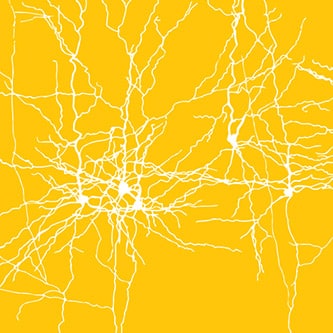An ELSC team led by Prof. Adi Mizrahi and doctoral student Haran Shani-Narkiss, researching the rare regenerating cells in the brain, have discovered that these unique cells have a crucial role in the coding of odors. The researchers developed an innovative experimental system for the study and manipulation of newly regenerated nerve cells. Their findings were published recently in the prestigious journal ‘Nature Communications’.
Throughout life, the adult body continues to produce a large number of new cells, such as in hair and blood. However, nerve cells (neurons), which are responsible for all communication in the brain, generally do not regenerate. Each brain contains the fixed number of nerve cells that we are born with, and in cases where nerve cells die (for example, as a result of a stroke or Alzheimer’s disease) the brain’s inability to regenerate itself is evident in the severe loss of function.
However, in recent years, it has been demonstrated that a small number of nerve cells do regenerate in the brain, in a limited way and in a limited number of areas. These cells are important for learning and memory, among other things. However, fundamental questions remain unanswered: How do these newly recruited cells affect neural activity in the existing neural circuitry? How do the young and old neurons contribute differently to the coding of information in the adult brain? In their recent work, the ELSC team addressed those questions.
“We used innovative biological and genetic tools to silence the activity of the new cells and measured how this manipulation affected the function of the existing neural circuit,” Shani-NarkisS explained. “We found that although new cells make up a small percentage of the total cell population, they are crucial to efficient coding of odors and that their impact is larger when they are young (one to two months old) and wanes off as they mature. Indeed, the brain uses the unique features of the regenerated cells to improve the calculations it performs.”
“This research is another step on our path to understanding the riddle of the brain,” added Prof. Mizrahi. “Understanding brain regeneration processes is critical to our ability to intervene to improve brain function in pathological conditions.”

Regenerating adult-born neurons (red, blue) and non-regenerating mitral cells (green) populations in the mouse olfactory bulb. Image acquired with confocal microscopy.
In the Media:
1. Ynet
2. Interview with Haran Shani-Narkiss




